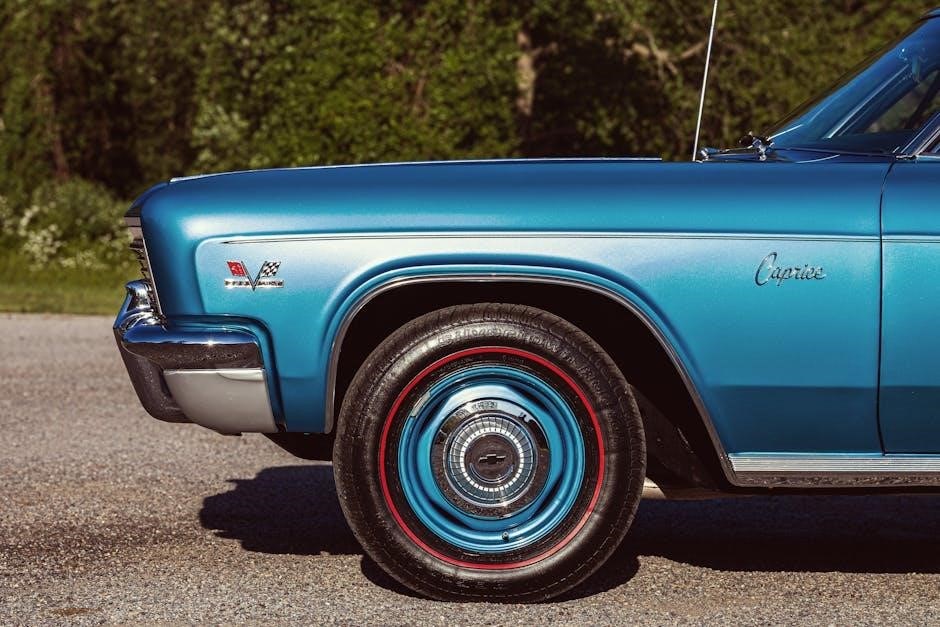
2014 chevy cruze diesel engine diagram pdf
The 2014 Chevy Cruze Diesel Engine Diagram is a crucial resource for understanding the intricacies of this powerful and efficient powertrain․ As diesel cars gain popularity in the U․S․ market, the Cruze’s diesel engine stands out for its fuel efficiency and performance․ This guide provides an in-depth look at the engine’s components, lubrication system, and overall architecture․ Whether for maintenance or repair, this diagram is essential for anyone working with the 2014 Chevy Cruze Diesel Engine․
Today is 10/14/2025 19:44:08 ()
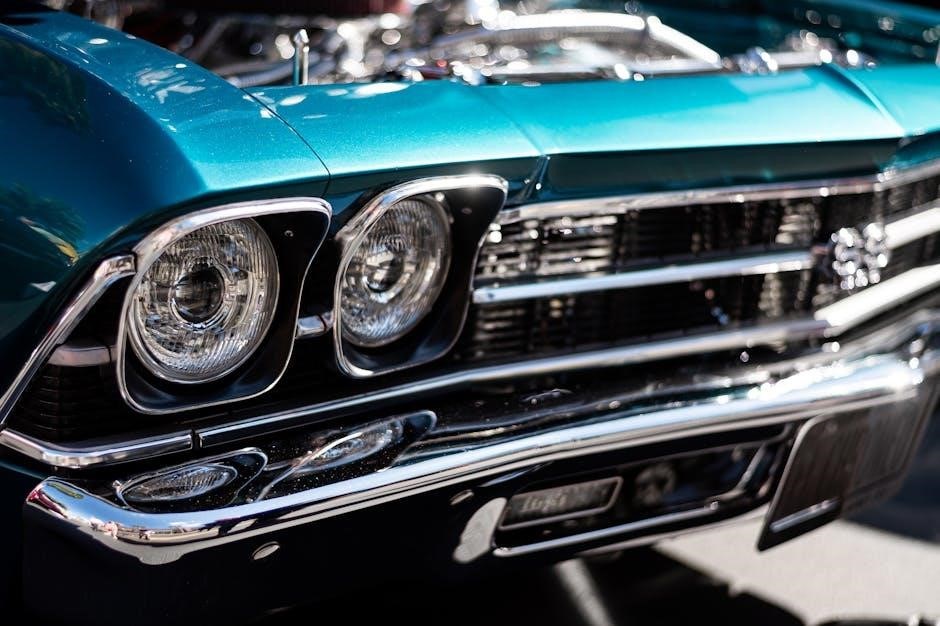
Overview of the 2014 Chevy Cruze Diesel Engine
The 2014 Chevy Cruze Diesel Engine is a 2․0-liter turbocharged powerhouse, balancing performance and fuel efficiency․ Designed for the U․S․ market, it reflects growing interest in diesel technology․ With a focus on reliability and eco-friendliness, this engine meets modern demands․ Its architecture supports smooth operation, making it a standout choice for drivers seeking a blend of power and economy․
Its happening․ More diesel cars are coming to the U․S․ market—and the timing couldn’t be better․
2․1 Key Components of the Engine
The 2014 Chevy Cruze Diesel Engine is built around several critical components that ensure its optimal performance and efficiency․ At the heart of the engine is the engine block, which houses the cylinders and serves as the foundation for all moving parts․ The cylinder head sits atop the engine block, containing the valves that regulate airflow and combustion․ Inside the cylinders, pistons move up and down, driven by the explosive force of fuel ignition․
The crankshaft converts the vertical motion of the pistons into rotational energy, which is then transferred to the vehicle’s transmission․ A camshaft operates the valves, ensuring precise timing for intake and exhaust cycles․ The fuel injection system delivers diesel fuel directly into the cylinders at high pressure, enabling efficient combustion․ Additionally, the turbocharger compresses incoming air, boosting power and torque․ Finally, the cooling system circulates coolant through the engine to maintain optimal operating temperatures․
Together, these components work in harmony to deliver the Cruze Diesel’s renowned fuel efficiency and robust performance․ Understanding these key parts is essential for diagnosing and maintaining the engine, as detailed in the 2014 Chevy Cruze Diesel Engine Diagram PDF․
2․2 Lubrication System Overview
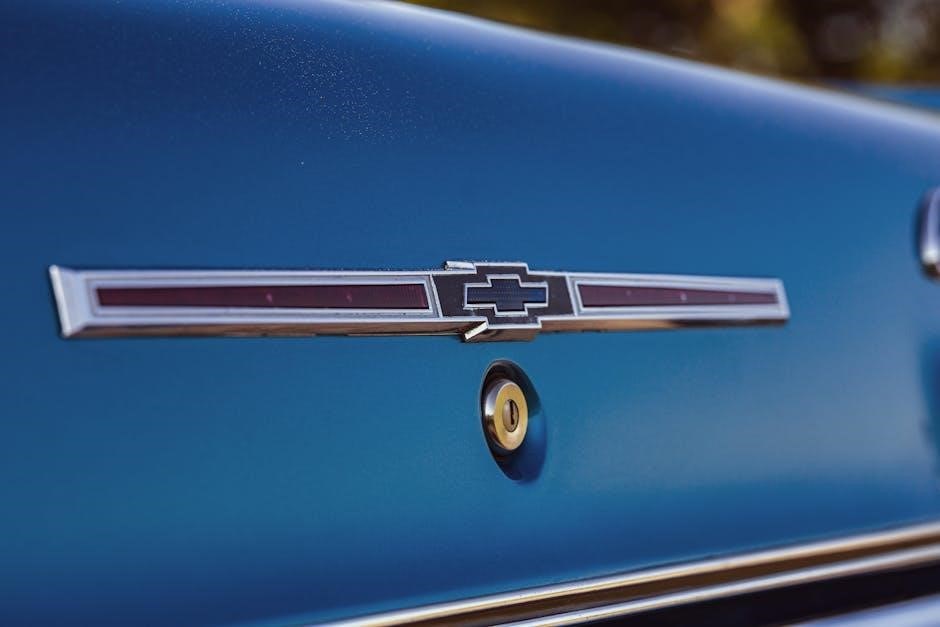
The lubrication system in the 2014 Chevy Cruze Diesel Engine is a critical subsystem designed to ensure the longevity and efficient operation of the engine․ This system circulates oil throughout the engine to reduce friction between moving parts, prevent overheating, and remove contaminants․ The heart of the system is the oil pump, which creates the pressure needed to distribute oil to all critical components, including the crankshaft, camshaft, and valve train․

The oil is stored in the oil pan, located at the bottom of the engine, and is filtered by the oil filter to remove dirt and debris before being circulated․ The oil galleries, or passageways, within the engine block and cylinder head ensure that oil reaches every necessary part․ Additionally, oil jets are used to cool the pistons by spraying oil onto them․ This system is vital for maintaining the engine’s performance and efficiency, especially under the higher compression and stress of a diesel engine․
The 2014 Chevy Cruze Diesel Engine Diagram PDF provides detailed illustrations of the lubrication system, highlighting the flow of oil and the location of key components․ This makes it easier for mechanics and enthusiasts to understand and maintain the system․ Regular maintenance, such as oil changes and filter replacements, is essential to keep the lubrication system functioning properly and to extend the life of the engine․
As diesel cars gain popularity in the U․S․ market, understanding systems like the lubrication system becomes increasingly important for both owners and technicians․ With the growing demand for diesel vehicles, having a well-maintained engine ensures reliability and optimal performance on the road․
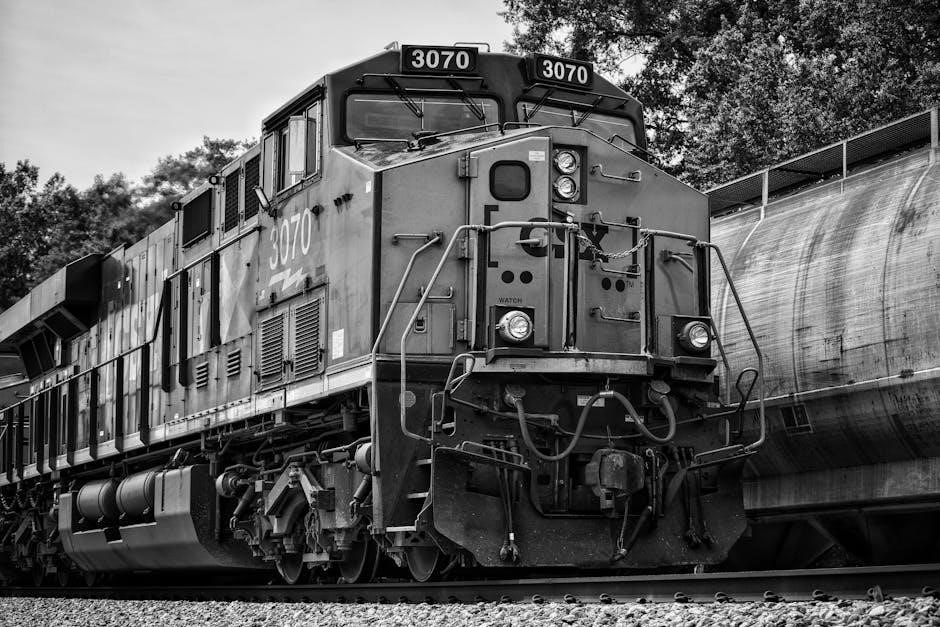
Engine Components
The 2014 Chevy Cruze Diesel Engine comprises several key components essential for its operation․ The engine block houses the cylinders, while the cylinder head contains the valves and ports for air and fuel flow․ The pistons and crankshaft convert combustion energy into rotational motion․ The valve train, including camshafts and lifters, ensures proper airflow․ Additionally, the fuel system and turbocharger enhance performance and efficiency, making the Cruze Diesel a robust choice in its class․
3․1 Engine Block Structure
The engine block of the 2014 Chevy Cruze Diesel is the foundational component of the powertrain, serving as the housing for the cylinders and other critical internal parts․ Constructed from high-strength materials, the engine block is designed to withstand the rigors of diesel combustion while maintaining optimal thermal and mechanical efficiency․ The block features a compact, lightweight design, which contributes to the overall fuel efficiency of the vehicle․
The engine block incorporates a four-cylinder configuration, arranged in an inline layout to minimize complexity and maximize performance․ Each cylinder is equipped with cylinder liners, which are replaceable sleeves designed to reduce wear and tear over time․ The block also includes integrated passages for coolant circulation, ensuring consistent temperature control and preventing overheating during operation․

One of the standout features of the Cruze Diesel engine block is its rigid structure, which helps minimize noise, vibration, and harshness (NVH)․ The block is also equipped with mounting points for the crankshaft and camshaft, which are essential for converting the explosive force of combustion into usable mechanical energy․ Additionally, the engine block houses the oil pan and main bearings, which are critical for lubrication and smooth operation․
The 2014 Chevy Cruze Diesel engine block is a testament to modern engineering, balancing durability, efficiency, and performance․ Its robust design ensures longevity while supporting the advanced features of the diesel powertrain․ For technicians and enthusiasts, understanding the engine block structure is essential for diagnosing and maintaining the vehicle’s performance․
3․2 Cylinder Head Design
The cylinder head in the 2014 Chevy Cruze Diesel Engine is a critical component designed to optimize performance, efficiency, and durability․ Constructed from high-strength aluminum alloy, the cylinder head is lightweight yet robust, capable of withstanding the intense heat and pressure generated by diesel combustion․ Its design plays a pivotal role in managing the flow of air and fuel, as well as facilitating the combustion process․
One of the standout features of the cylinder head is its dual overhead camshaft (DOHC) design, which provides precise control over the intake and exhaust valves․ This configuration allows for a more efficient flow of air and gases, enhancing both power output and fuel efficiency․ The cylinder head is equipped with four valves per cylinder—two intake and two exhaust—ensuring optimal airflow and rapid exhaust gas expulsion, which is particularly beneficial for diesel engines․
The combustion chamber within the cylinder head is carefully engineered to promote efficient fuel combustion․ Its compact design helps to maximize the mixing of fuel and air, which is essential for the high compression ratios typical of diesel engines․ Additionally, the cylinder head incorporates advanced fuel injector ports that enable precise fuel delivery, further enhancing combustion efficiency and reducing emissions․
Cooling is another critical aspect of the cylinder head design․ It features an integrated cooling system with passages that allow coolant to circulate efficiently, maintaining optimal operating temperatures even under heavy loads․ This helps to prevent overheating and ensures the longevity of the engine․
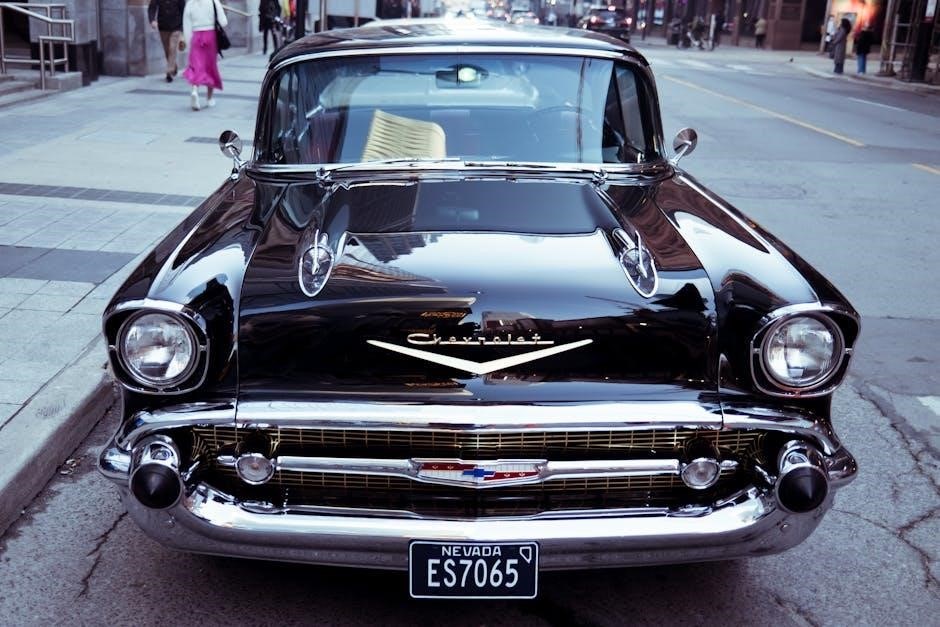
The cylinder head also integrates emissions control technologies, such as exhaust gas recirculation (EGR) ports, which help reduce nitrogen oxide emissions by recirculating a portion of the exhaust gases back into the combustion chamber․ This not only meets stringent emissions standards but also contributes to a cleaner, more environmentally friendly performance․
3․3 Fuel System Architecture
The fuel system of the 2014 Chevy Cruze Diesel Engine is a sophisticated architecture designed to deliver fuel efficiently and precisely to the combustion chambers․ This system is crucial for the engine’s performance, fuel efficiency, and emissions control․ At the heart of the fuel system lies the common rail fuel injection system, which is a hallmark of modern diesel engines․
The fuel system begins with the fuel tank, which stores the diesel fuel․ From there, a fuel lift pump is responsible for drawing fuel from the tank and delivering it to the fuel filter․ The fuel filter plays a vital role in removing contaminants and impurities from the fuel before it reaches the high-pressure components․ Clean fuel is essential to prevent damage to the fuel injectors and other parts of the system․
The filtered fuel is then pressurized by a high-pressure fuel pump, which generates the extreme pressures required for diesel fuel injection․ This pump is typically driven by the engine’s camshaft and is capable of producing pressures in excess of 30,000 psi․ The pressurized fuel is stored in a common rail, a shared fuel reservoir that supplies fuel to all the cylinders․
The fuel injectors are electronically controlled by the engine’s control unit (ECU) to ensure precise fuel delivery․ These injectors spray fuel into the combustion chambers at the exact moment needed for optimal combustion․ The ECU calculates the correct amount of fuel based on factors such as engine speed, load, and temperature, ensuring efficient and clean operation․
The fuel system also incorporates a fuel pressure regulator, which maintains the correct pressure within the common rail․ Excess fuel is returned to the fuel tank via a fuel return line, completing the circuit․ This continuous flow ensures that the system remains pressurized and ready to deliver fuel on demand․
In addition to the core components, the fuel system is equipped with sensors and monitoring systems to ensure proper operation․ These include fuel pressure sensors, temperature sensors, and flow meters, all of which provide data to the ECU for real-time adjustments․ This level of sophistication allows the system to adapt to varying driving conditions and maintain peak performance․
3․4 Cooling System Layout
The cooling system of the 2014 Chevy Cruze Diesel Engine is a critical component designed to maintain optimal engine temperatures during operation․ This system is essential for preventing overheating, which can lead to engine damage and reduced performance․ The cooling system layout is a well-engineered configuration that ensures efficient heat dissipation under various driving conditions․
At the core of the cooling system is the radiator, which serves as the primary heat exchanger․ The radiator is responsible for dissipating heat from the coolant to the surrounding air․ It is typically located at the front of the vehicle to maximize airflow․ The radiator is constructed with a combination of aluminum and plastic materials for durability and efficiency․
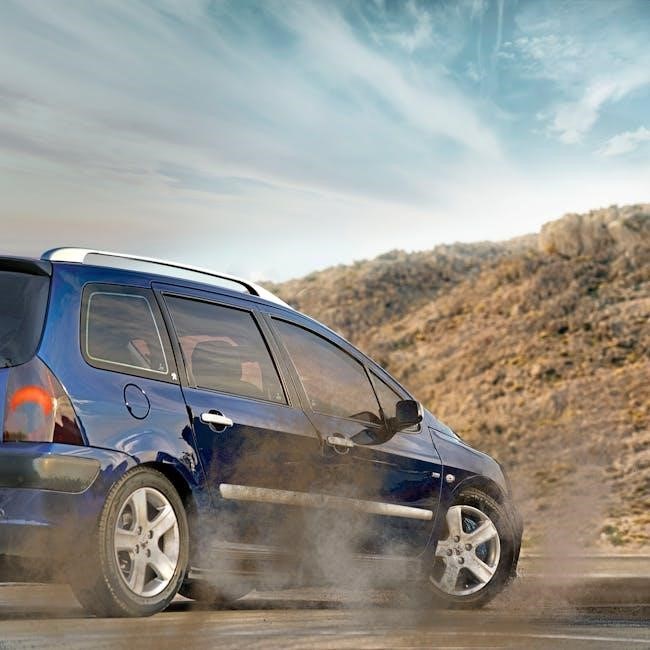
The water pump, also known as the coolant pump, plays a vital role in circulating the coolant through the engine and radiator․ It is usually driven by the serpentine belt and ensures that the coolant flows consistently through the system․ The water pump is designed to handle the high pressures and temperatures associated with diesel engine operation․
The coolant itself is a mixture of antifreeze and water, which helps to prevent freezing in cold temperatures and boiling at high temperatures․ The coolant circulates through the engine block, cylinder head, and other components, absorbing heat and transferring it to the radiator․
The cooling system also incorporates a thermostat, which regulates the flow of coolant based on engine temperature․ When the engine is cold, the thermostat restricts coolant flow to allow the engine to warm up quickly․ As the engine reaches its optimal operating temperature, the thermostat opens to allow full coolant circulation․
In addition to the radiator and water pump, the system includes hoses that connect these components and allow the coolant to flow throughout the engine․ These hoses are designed to withstand high pressures and temperatures, ensuring reliable performance over time․
The cooling fans are an integral part of the cooling system, providing additional airflow through the radiator when the vehicle is stationary or moving at low speeds․ These fans are typically controlled by the engine’s control unit (ECU) and activate based on coolant temperature to maintain optimal engine temperature․
3․5 Exhaust System Configuration
The exhaust system of the 2014 Chevy Cruze Diesel Engine is a complex network of components designed to efficiently direct exhaust gases away from the engine while minimizing emissions and noise․ This system plays a crucial role in maintaining engine performance, fuel efficiency, and environmental compliance․ The configuration of the exhaust system is carefully engineered to handle the unique demands of a diesel engine․

At the heart of the exhaust system is the exhaust manifold, which collects exhaust gases from the engine’s cylinders․ The manifold is constructed from durable materials, such as stainless steel or cast iron, to withstand high temperatures and corrosion․ It is designed to merge the exhaust gases from multiple cylinders into a single stream, ensuring efficient flow through the system․
Connected to the exhaust manifold is the turbocharger, which uses the energy from the exhaust gases to compress incoming air for the engine․ Although the turbocharger is primarily associated with engine performance, it also plays a role in the exhaust system by reducing backpressure and improving gas flow․ The turbocharger is a key component in optimizing the engine’s efficiency and power output․
Following the turbocharger, the exhaust gases flow through the diesel particulate filter (DPF), a critical emissions control device․ The DPF captures soot and other particulate matter from the exhaust gases, reducing emissions and complying with environmental regulations․ The system may also include a diesel oxidation catalyst (DOC), which further reduces harmful emissions by converting pollutants into less harmful substances․
The exhaust gases then pass through the muffler, which is designed to reduce noise levels․ The muffler uses internal chambers and perforations to dissipate sound energy, ensuring that the exhaust system operates quietly․ Finally, the gases exit the system through the tailpipe, which is typically located at the rear of the vehicle․
The entire exhaust system is constructed from high-quality materials to ensure durability and resistance to corrosion․ Proper maintenance of the exhaust system is essential to maintain engine performance and emissions compliance․ Any blockages or damage to the system can lead to reduced fuel efficiency, increased emissions, and potential engine damage․
3․6 Turbocharger Functionality
The turbocharger in the 2014 Chevy Cruze Diesel Engine is a critical component designed to enhance engine performance, efficiency, and power output․ By utilizing the energy from exhaust gases, the turbocharger compresses incoming air, forcing more oxygen into the engine’s combustion chamber․ This process significantly increases the engine’s power and torque, making it a vital part of the diesel engine’s functionality․
The turbocharger consists of two main components: the turbine and the compressor․ The turbine is driven by the exhaust gases exiting the engine, while the compressor uses the energy from the turbine to pressurize the incoming air․ This forced induction system allows the engine to burn fuel more efficiently, resulting in improved fuel economy and reduced emissions․
The turbocharger is interconnected with the engine’s intercooler, which cools the compressed air before it enters the engine․ This cooling process increases the air’s density, allowing even more oxygen to be packed into the combustion chamber․ The combination of the turbocharger and intercooler ensures that the engine operates at peak efficiency, even under heavy loads or high-speed driving conditions․
One of the key benefits of the turbocharger is its ability to reduce turbo lag, a common issue in older diesel engines․ By optimizing the turbine and compressor design, the 2014 Chevy Cruze Diesel Engine delivers smooth and responsive power delivery․ This makes the vehicle more enjoyable to drive while maintaining the fuel efficiency advantages of a diesel engine․
The turbocharger also plays a role in emissions control․ By increasing the efficiency of combustion, it helps reduce the production of harmful pollutants․ This aligns with the growing trend of diesel cars entering the U․S․ market, as highlighted by recent studies from organizations like the National Association for Convenience and Fuel Retailing (NACS)․ With 31 percent of consumers showing increased interest in diesel vehicles, the turbocharger’s functionality is more relevant than ever․
Today is 10/14/2025 19:44:08 ()
How to Read the Engine Diagram
Reading the engine diagram for the 2014 Chevy Cruze Diesel Engine requires a systematic approach to understand its complex components and their interconnections․ Begin by identifying the major components such as the engine block, cylinder head, fuel system, cooling system, and exhaust system․ These are fundamental parts that form the backbone of the engine’s functionality․
Next, focus on the lines and symbols depicted in the diagram․ These lines represent fuel lines, coolant lines, and other essential connections․ To make sense of them, look for a legend or key that explains the symbols and line types․ This will help you decipher what each line carries, whether it’s fuel, coolant, or another substance․
Understanding the flow of air and fuel is crucial, especially in a diesel engine․ The process involves compressing air and injecting fuel at the right time, which is different from a gasoline engine․ Familiarize yourself with this process to grasp how the components work together seamlessly․
Modern engines, including the 2014 Chevy Cruze Diesel, rely on electronic controls․ The diagram includes electrical components like sensors and wiring․ Understanding how these integrate with mechanical parts is essential․ Consider referencing basic electrical diagrams to comprehend the communication between systems․
Utilize the PDF’s zoom feature to examine specific areas in detail․ Printing the diagram and annotating it with notes can enhance your learning experience․ Break down the diagram into sections or systems, such as the fuel system or cooling system, to understand each part’s role before seeing how they interact․
Seeking additional resources, like online tutorials or videos specific to the 2014 Chevy Cruze Diesel Engine, can provide step-by-step guidance․ Comparing this diagram with others you’re familiar with can highlight similarities and differences, aiding in identifying common components․
Finally, prioritize safety․ Thoroughly understanding the diagram before performing any engine work is vital to avoid costly or dangerous mistakes․ Knowing the layout ensures proper handling of critical components․

Today is 10/14/2025 19:44:08 ()